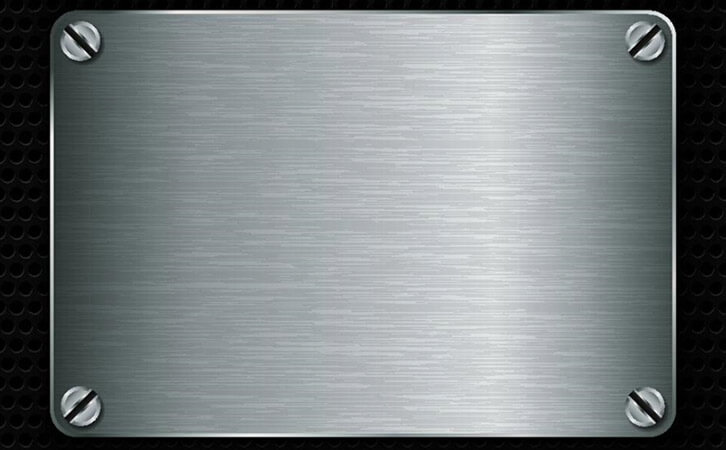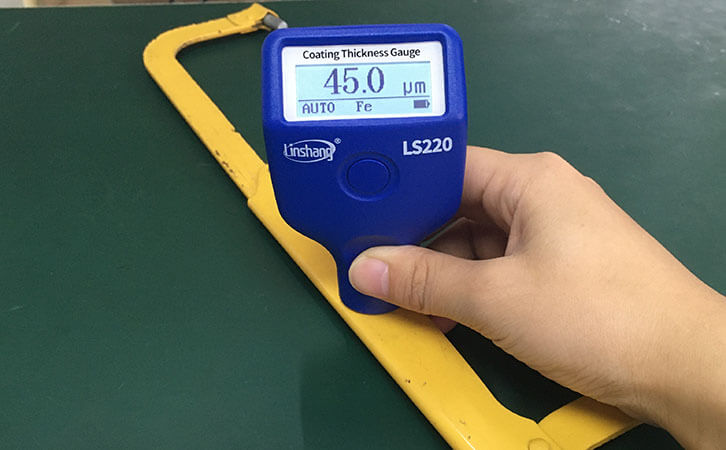Metal Paint Thickness Gauge
The coating is actually a metal-based composite material,which means that a layer of plastic is applied to the metal surface for storage or good-looking or a thin layer of the precious metal is plated on the ordinary metal surface. The fabrication of a composite coating refers to a process in which one or several insoluble solid particles are added to a plating solution to co-deposit solid particles with metal ions.
1.What are the effects of metal plating and their effects?
1)Galvanized layer
Zinc metal is relatively stable in a dry environment and is not easily discolored.A zinc carbonate film can be formed in a humid environment with oxygen or carbon dioxide.It can prevent zinc from continuing to oxidize. The anti-corrosion ability of the galvanized layer after passivation treatment is greatly increased, the galvanized layer has low cost,convenient processing and good effect.
2)Cadmium plating layer
The cadmium-plated layer is characterized by a cadmium-plated layer that is relatively stable in corrosion resistance and good lubricity in marine environments or parts in contact with seawater and in high temperatures above 70 °C.It is easily dissolved in nitric acid and dissolves slowly in a hydrochloric acid environment.The oxide is not easily soluble in water. Compared with the galvanized layer, the cadmium-plated layer is soft in texture and strong in adhesion.The cadmium plating layer is more beautiful than other plating layers under certain electrolytic conditions.Under normal conditions, cadmium is a negative coating of steel and is anodized in the ocean and high temperature atmosphere.

3)Chrome layer
Chromium is very stable in humid environments,as well as in alkali, acid and organic acids.But it is highly soluble in hydrochloric acid and concentrated sulfuric acid.Metallic chromium is easily passivated into a film in the air to change the potential.Therefore,it belongs to the cathode plating.
4)Copper plating
Copper metal is highly oxidizable in air,especially during heating.But it has a high positive potential,which can ensure that other metals are not corroded and have high conductivity.The copper plating layer is compact and fine which has a good polishing property in close combination with the metal.
5)Nickel plating
Nickel plating is characterized by high temperature resistance (oxidation when the temperature is 600 °C).It is not easy to change color and polish with high hardness and high light reflectivity.And it can increase the appearance and anti-corrosion effect.
2. Metal plating thickness requirements
[National Standards] GB T 5267.1-2002 Fasteners Electroplating Standards are required for the thickness of the plating layer.The metal paint thickness gauge must meet the following standards.
When the nominal plating thickness value is 3μm, the minimum value of the average thickness of the effective plating layer shall not be less than 3μm and finally shall not exceed 5μm.
When the nominal plating thickness is 5μm,the minimum value of the average thickness of the effective coating thickness shall not be less than 4μm and finally shall not exceed 6μm.
When the nominal plating thickness value is 8μm, the minimum value of the batch average thickness in the effective coating thickness cannot be lower than 7μm and finally cannot exceed 10μm.
When the nominal plating thickness value is 10μm, the minimum value of the batch average thickness in the effective coating thickness cannot be lower than 9μm and finally cannot exceed 12μm.
When the nominal plating thickness value is 12μm, the minimum value of the batch average thickness in the effective coating thickness cannot be lower than 11μm and finally cannot exceed 15μm.
When the nominal plating thickness value is 15μm, the minimum value of the batch average thickness in the effective coating thickness cannot be lower than 14μm and finally cannot exceed 18μm.
When the nominal plating thickness value is 20μm, the minimum value of the batch average thickness in the effective coating thickness cannot be lower than 18μm and finally cannot exceed 23μm.
When the nominal plating thickness is 25μm, the minimum value of the average thickness of the effective coating thickness shall not be less than 23μm and finally shall not exceed 28μm.
3. Measuring the the coating thickness using a metal paint thickness gauge
The country has clear requirements for the metal coating thickness,we must use a metal paint thickness gauge to measure the coating thickness.The Linshang LS220H metal paint thickness gauge can be used not only to measure the thickness of various metal coatings,but also to measure coatings such as plastics, paints, enamels, etc.For the measurement of the layer thickness,the metal paint thickness gauge adopts the principle of non-destructive measurement by magnetic thickness measurement method and eddy current thickness measurement method.It does not damage the metal plating layer surface when measuring it.The specific parameters of the instrument are as follows:
● Probe tip: ruby fixed
● Measuring range: 0.0-2000μm
● Measurement accuracy: ≤ ± (3% reading + 2μm)
● Resolution: 0.1μm: (0μm - 99.9μm)
1μm: (100μm - 999μm)
0.01mm: (1.00mm - 2.00mm)
● Operating temperature range:0°C-50°C
The Linshang LS220H metal paint thickness gauge not only has high measurement accuracy,but also has a wide range of measuring materials.It also meets the following national standards:
1."GB/T 4957-2003 Non-conductive coating thickness measurement on non-magnetic base metal - eddy current method"
2."JJG-818-2005 Magnetic and Eddy Current Cover Thickness Measuring Instrument Verification Regulations"
3.Determination of film thickness of paints and varnishes according to DIN EN ISO 2808
4."GB/T 4956-2003 Non-magnetic coating thickness measurement on magnetic substrate - magnetic method"
The metal paint thickness gauge is the best choice for your coating measurement.
- High precision coating thickness gauge for used car
- Automotive paint protection films coating thickness gauge
- Plating Thickness Measuring Instrument for Detecting Anti-corrosion Coating
- Linshang LS220, LS191, LS160A– Necessary for Car Cover Inspection
- Coating Thickness Gauge for Second Hand Vehicle
- Zero Adjustment Step of Coating Thickness Gauge
